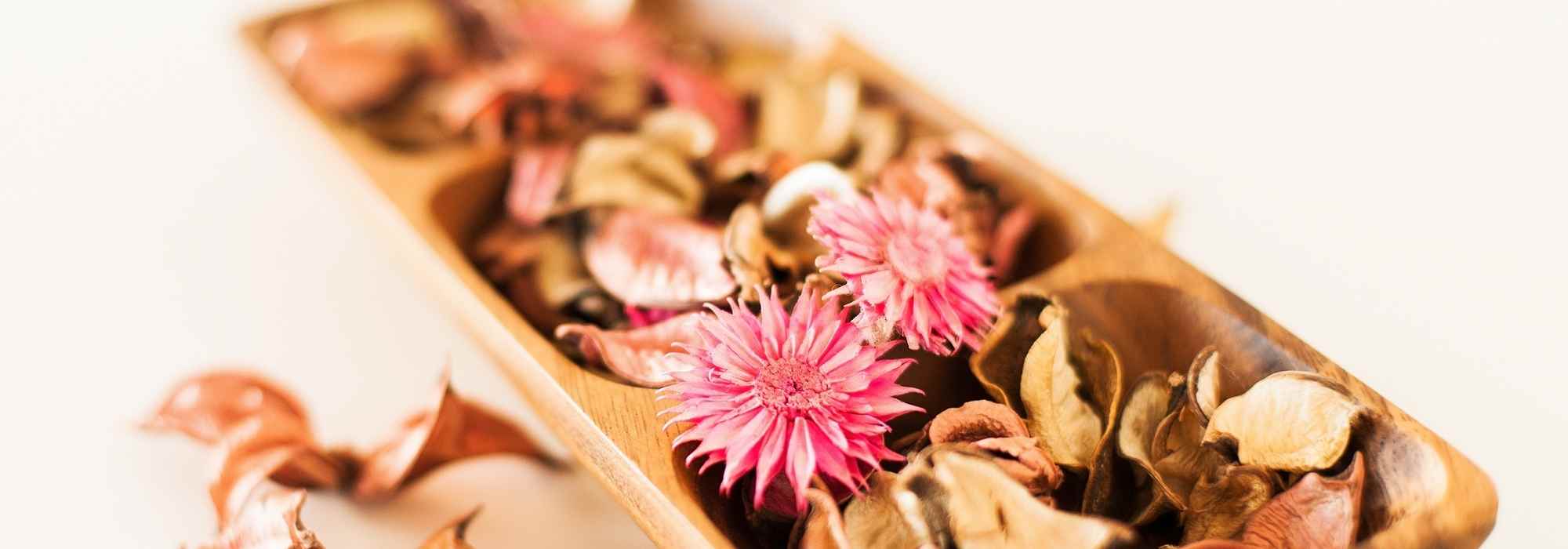
How to make potpourri?
Easily make homemade potpourri to scent and decorate your home
Contents
Despite its unappealing name, potpourri has many benefits for interiors, scenting them naturally while adding a pretty decorative touch.
Easy to make at home and economical, potpourris declinate into many versions to vary scents and colours, according to individual tastes.
Here is our summary of the different steps to make a homemade potpourri: from selecting ingredients, to various drying methods, finishing with assembly and proper storage.
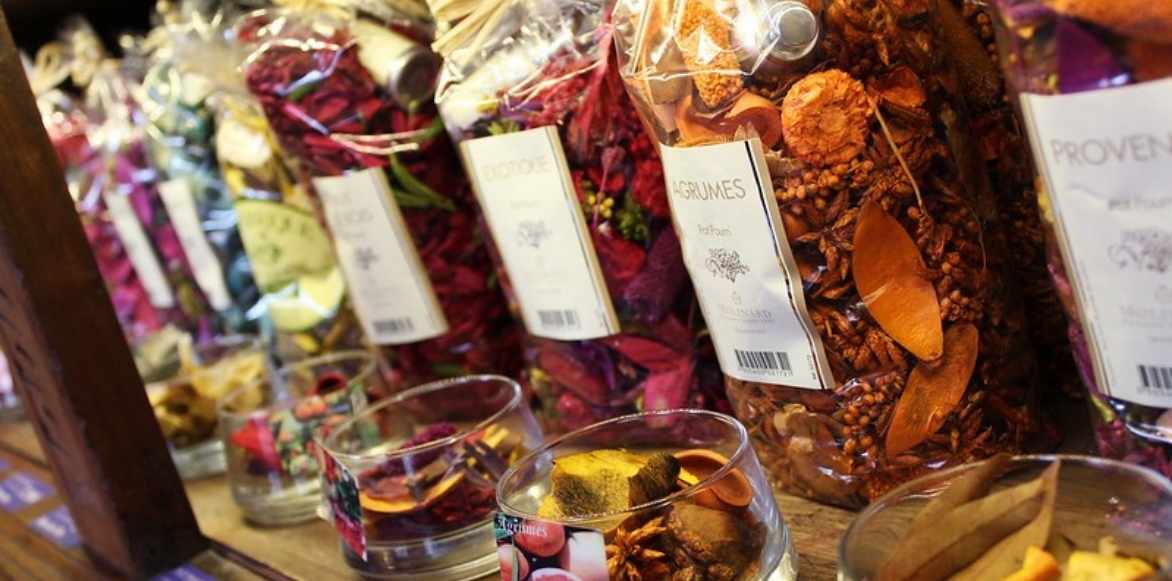
Potpourris declinate at will (© mhagemann)
What to put in potpourri?
Potpourri is a mix of dried plant material, selected for their scent and/or visual appeal.
It usually contains several components.
- Flowers: roses (buds or petals), jasmine, lilac, mimosa, hibiscus, geranium, iris, lily of the valley…
- Fruits: bark of citrus trees, berries, apple slices, banana rounds…
- Aromatic herbs: thyme, rosemary, lavender, sage, lemon balm, lemongrass…
- Spices: cinnamon stick, clove, cardamom, star anise, ginger, vanilla pod, nutmeg, coffee beans…
- Leaves: eucalyptus, bay, tea, ivy, holly…
- Decorative elements: bark, pine cones, branches, pebbles, shells…
- Essential oils: citrus trees, lavender, cedar, rose…
The aim is to combine harmonious scents while achieving a decorative result. For this, you can vary colours, shapes and textures: for example, scented flowers will provide a natural fragrance, while unscented flowers will bring colour and an exotic touch.
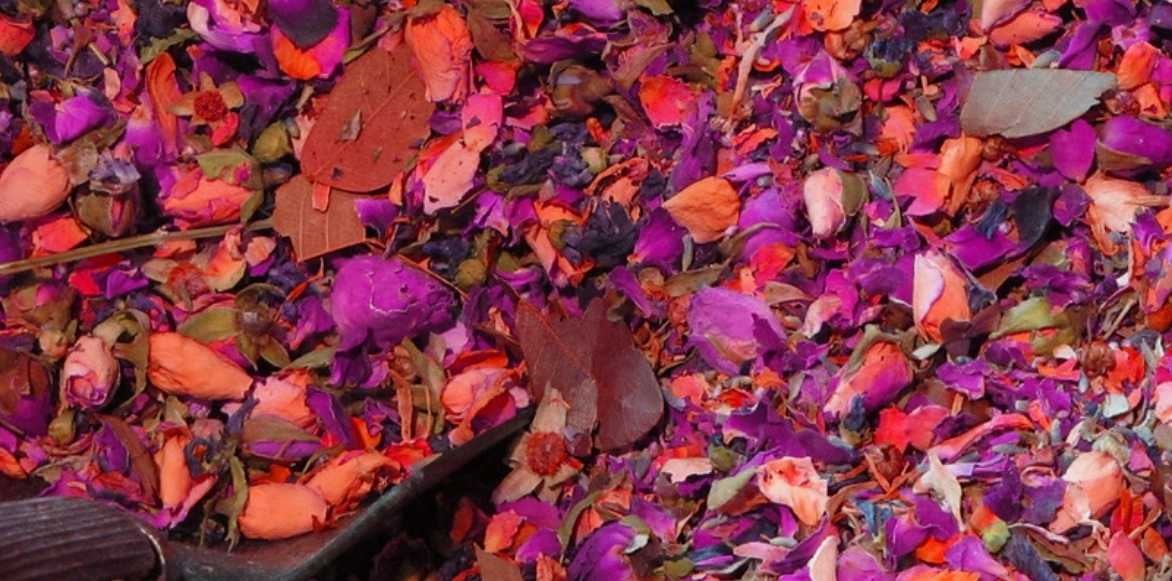
Traditional potpourri made from roses (© Andrew Gustar)
How to pick plant material for drying?
Pick preferably in the morning of a dry, sunny day, to prepare for drying. Choose the best, youngest flowers and plants.
Basic equipment needed to gather potpourri ingredients :
- a basket or a crate lined with a cloth or newspaper, to lay items flat without damaging them
- pruning shears or scissors cleaned beforehand
Before making your potpourri, you can opt for a mix of flower seeds for drying, very decorative. This assortment allows you to grow decorative flowers yourself easily, which dry quickly while retaining colour and shape: lavender, honesty, Nigella damascena, poppy or zinnia.
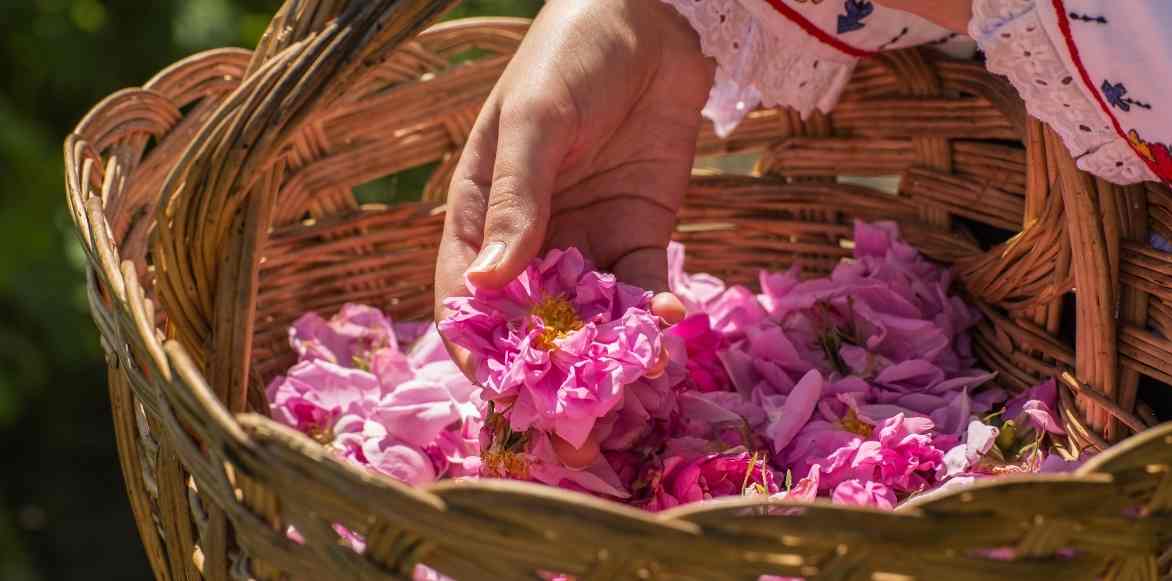
Read also
How to dry roses?Two single methods for drying potpourri
Air-drying
Natural air-drying is an easy and economical method, which nevertheless requires a little patience.
- Cut largest items, such as fruit, into slices or small pieces.
- Arrange ingredients on a sieve, a crate or a short stem of bulb, covered with a leaf of absorbent paper or a tea towel. Make sure ingredients do not overlap, to ensure successful drying.
- Place them in a dry, ventilated and dark location, well protected from sunlight. If this is not possible, cover the harvest with a fine fabric, voile or muslin, allowing air to circulate while protecting from light.
- Turn daily the ingredients, in order to homogenise the drying and avoid any risk of rot.
Drying will be complete after about 15 days, when items become crumbly and brittle.
Oven-drying
Traditional oven-drying is a quick technique, especially used for drying larger, water-rich items, such as fruit.
- Arrange items on a baking tray lined with baking paper, taking care to space them out.
- Place in oven at low temperature (between 80 and 100°C).
- Leave oven door ajar at start of cooking to allow moisture to escape.
- Turn regularly and check items do not blacken.
Cooking time will vary depending on thickness of chosen items, from one to several hours before complete drying.
It is also possible to use a dehydrator for this method, or to make use of a fireplace in winter or a stove to dry ingredients.
Microwave drying, although possible, is more delicate: “cooking” must be specifically adapted to each item.
Assembling potpourri
Once elements are dried, you can easily add essential oils to further enhance the scents:
- place scent-retaining elements in a container (slices of citrus trees, bark, other decorative elements);
- pour a few drops of the essential oil of your choice;
- mix, then leave to rest for a few minutes;
- add the rest of the dried plants and flowers to complete the potpourri.
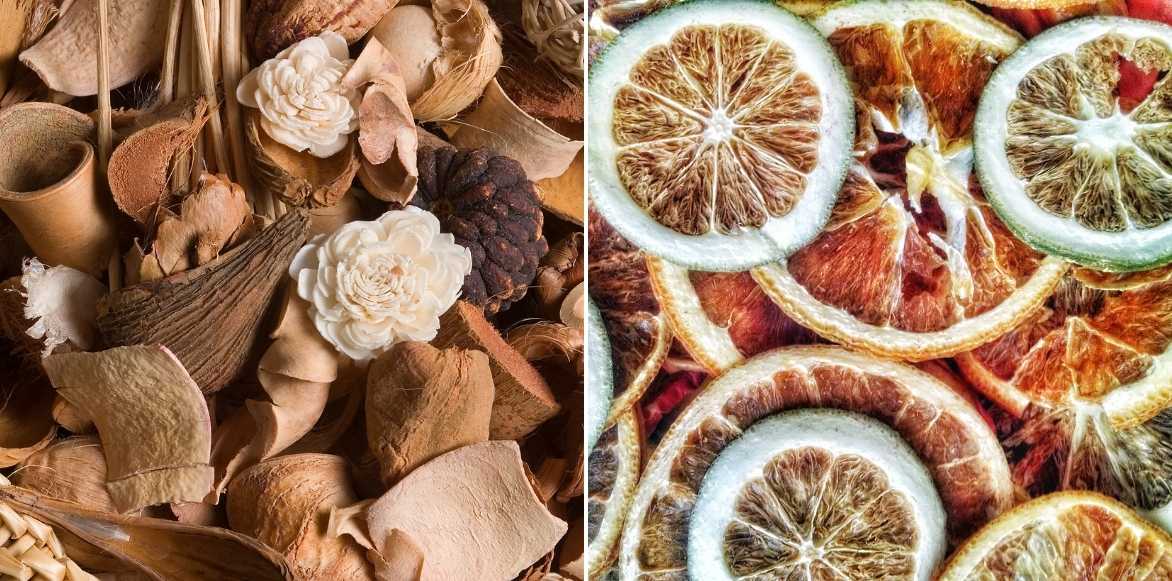
You can add dried fruits, shells, pine cones, especially to Christmas potpourris
Potpourri can be used as is or left to macerate in an airtight container for one to two weeks, shaking occasionally, to mix and homogenise the fragrances.
For a longer-lasting scent, add iris powder (available online, in cosmetics shops…), used as a fragrance fixative. One tablespoon sprinkled over the potpourri will be enough.
Finally, place the entire potpourri in a pretty container: dish, plate, jar or transparent glass box, terracotta pot, vase, etc. Potpourris have the advantage of being able to be varied depending on what you have to hand.
You can also make small scented sachets to deodorise wardrobes and dressing rooms. Some types of potpourri can even keep moths away from clothes, using citronella and lavender.
Read also
How to dry mimosa?Preserving potpourri
When first made, potpourri is often naturally quite fragrant. Adding essential oil is therefore optional, but will, after a few weeks, give the whole a new lease of life. Most commonly used essential oils are rose, lemon, orange or cinnamon.
Ideally, place potpourri well away from dust to make it last longer.
To revive it, place all the pieces in a sieve and shake while holding potpourri a few seconds above a saucepan of boiling water. Thanks to the steam, the pieces will rehydrate slightly, dust will disperse and potpourri will regain freshness.
Potpourri generally lasts 2 to 3 months. This is a chance to change scent and décor with each season. Potpourris can indeed adapt and evolve according to harvests and available ingredients: flower potpourris in summer, Christmas potpourris, spicy, woody autumn potpourris, citrus trees potpourris, rose potpourris, etc.
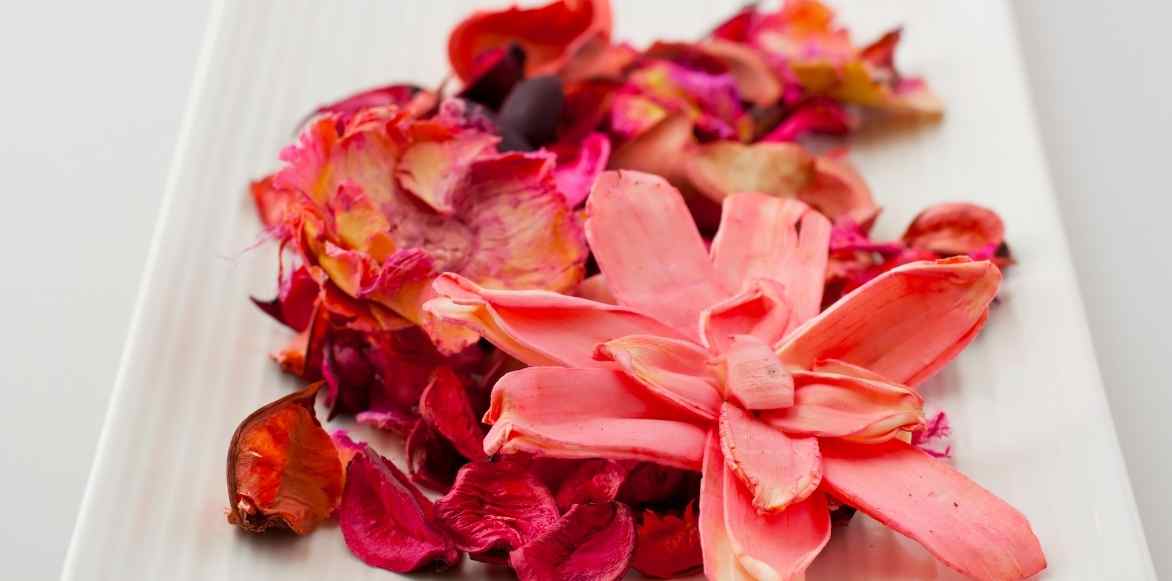
Change flowers and colours to change décor and scents!
- Subscribe!
- Contents
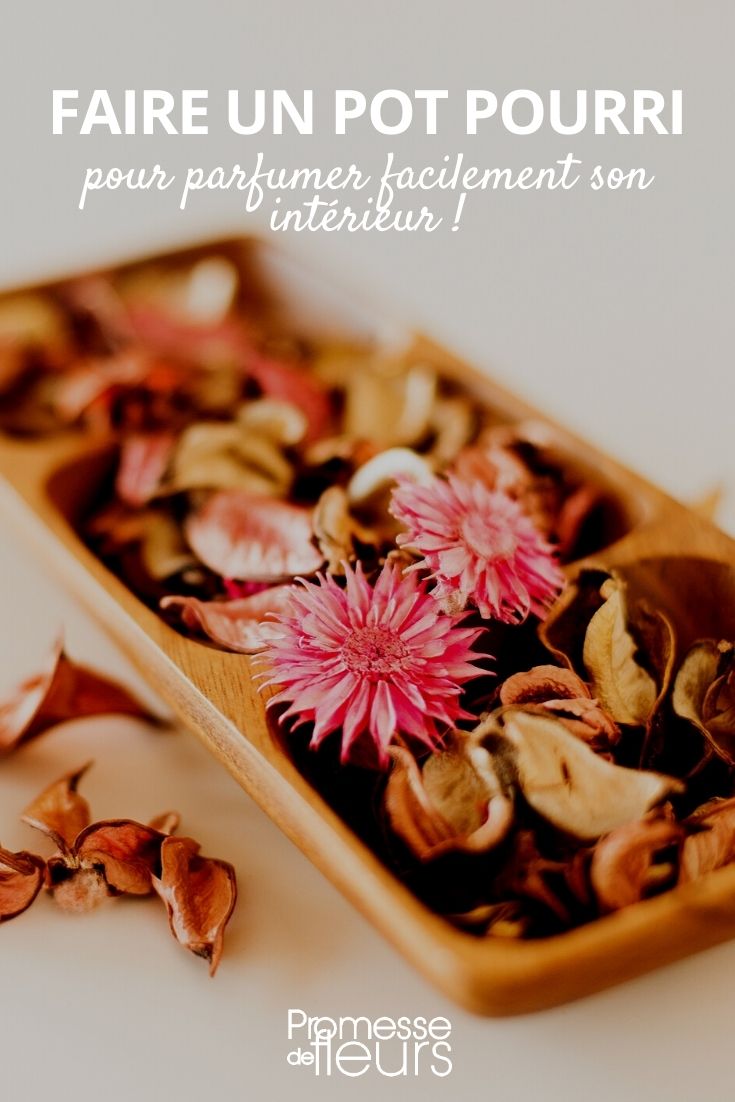































Comments